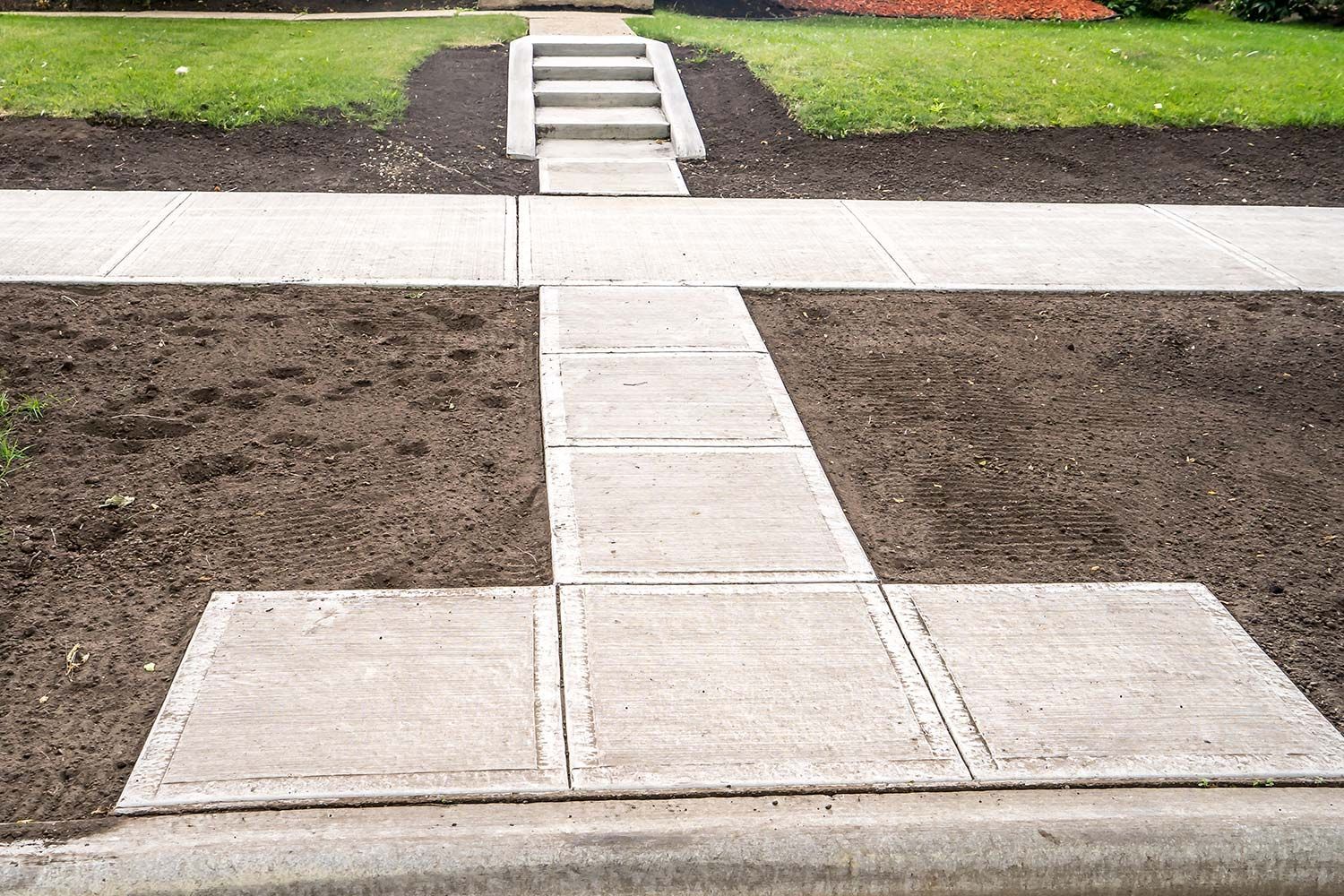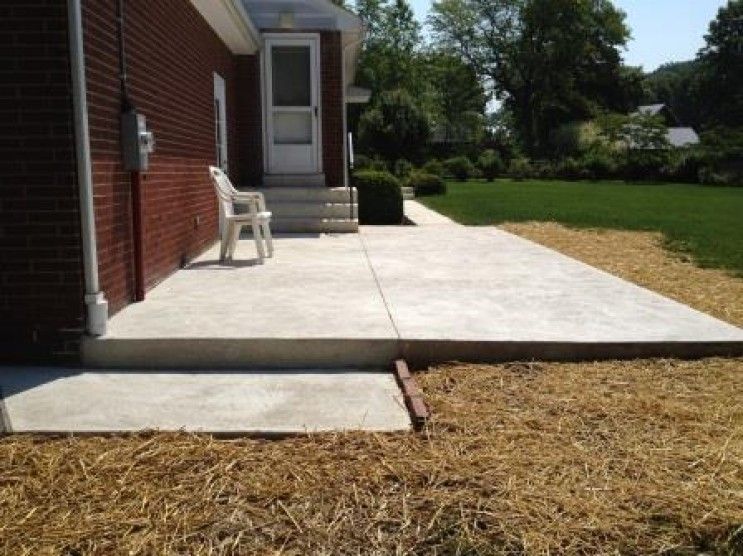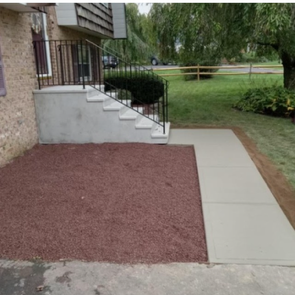Why Pro Excavation is Key to a Lasting Concrete Project

Have you ever wondered what makes a concrete driveway last for decades while another cracks and sinks after just a few years? The secret isn't just in the concrete mix itself, it's what lies beneath. The success of any concrete project, whether it's a new patio, walkway, or foundation, begins long before the first drop of concrete is poured. It starts with professional excavation.
Putting concrete on poorly prepared ground is like building a house on a foundation of sand. It might look good for a little while, but it’s destined to fail. That's why understanding the role of excavation is so important. We'll explore why this first step is the most critical part of your project and how getting it right ensures your investment stands the test of time.
Fun Fact: Archaeologists use excavation to uncover ancient cities, but contractors use it to build modern ones. The principles are surprisingly similar: both involve carefully removing earth layer by layer to create a stable and well-understood base to work from.
What is Excavation in the Context of a Concrete Project?
When we talk about excavation for concrete, we mean much more than just digging a hole. It’s a precise process of preparing the land to create a stable and supportive base for the concrete slab. This involves several key steps that a professional contractor, like Lifetime Concrete, handles with expertise.
Professional excavation includes:
- Removing topsoil and organic matter: The soft, uppermost layer of soil is full of organic material that decomposes over time, creating unstable voids. This layer must be completely removed.
- Digging to the proper depth: The excavation needs to be deep enough to accommodate a sub-base layer and the full thickness of the concrete slab.
- Grading the site: The land is carefully sloped to control water drainage and ensure a level surface.
- Compacting the sub-grade and sub-base: The soil and the gravel layer on top of it are mechanically compacted to create a dense, solid foundation.
Think of it as setting the stage. If the stage isn't strong and level, the performance is going to have some serious problems.
The Biggest Enemy of Concrete: Unstable Ground
So, what happens if you skip or rush the excavation process? You invite a host of problems that can ruin your beautiful new concrete surface.
1. Cracking and Sinking
This is the most common and costly issue. When the ground beneath the concrete settles unevenly, it creates stress points in the slab. Concrete is incredibly strong under compression but has very little tensile strength, meaning it doesn't like to be stretched or bent. As the ground shifts, the slab cracks under the strain.
Did You Know? A single cubic foot of typical soil can weigh between 75 and 110 pounds. When that soil is improperly compacted, it can settle significantly under the immense weight of a concrete slab, leading to structural failure.
2. Poor Drainage and Water Damage
Water is a powerful force, and if it's not managed correctly, it will destroy your concrete from below. Improper grading can cause water to pool under the slab. In colder climates, this is a recipe for disaster. When that water freezes, it expands with incredible force—a process called frost heave—which can lift and crack the concrete.
Proper excavation ensures the ground is sloped away from your home's foundation and that water has a clear path to run off, protecting both your new slab and your house.
3. An Uneven Finish
A perfectly smooth and level concrete surface is impossible to achieve on an uneven base. If the ground isn't graded correctly, you’ll end up with low spots where puddles form or high spots that create tripping hazards. Professional excavation guarantees a consistent and properly prepared base, which is the first step to a flawless finish.
Pro Tip: The type of soil on your property plays a huge role in excavation. Clay soils expand and contract dramatically with moisture changes, while sandy soils can erode. A professional contractor will assess your soil type and adjust the excavation and base preparation strategy accordingly.
The Professional Excavation Process: A Step-by-Step Look
So, what does a professional excavation job actually look like? While every project is unique, the core process follows a proven formula for success.
- Site Assessment and Marking: First, the project area is clearly marked out. The contractor will identify any underground utility lines (like gas, water, or electric) to ensure they are not disturbed.
- Topsoil Removal: Using heavy equipment, the team removes the top layer of organic soil until they reach the stable, inorganic sub-grade soil beneath.
- Grading and Sloping: The sub-grade is then meticulously graded. For driveways and patios, this means creating a slight, almost imperceptible slope (usually about a quarter-inch per foot) that directs water away from buildings.
- Sub-Base Installation: A layer of crushed stone or gravel is spread over the graded soil. This is the sub-base. It provides a crucial drainage layer and helps distribute the load of the concrete slab evenly.
- Compaction: This is a critical step. Both the sub-grade soil and the new sub-base layer are compacted using a heavy machine, like a plate compactor or roller. This process removes air pockets and creates a dense, solid foundation that will resist settling.
Only after these steps are completed is the site ready for the formwork and the concrete pour.
Quick Tip: Before any digging project, always call 811. It's a free national service that contacts local utility companies to mark the approximate location of their underground lines. This simple call can prevent a dangerous and costly accident.
Why You Should Always Hire a Pro for Excavation
It might be tempting to think you can save money by doing the digging yourself, but excavation is a job where expertise matters immensely. A professional contractor like Lifetime Concrete brings not just the heavy equipment, but also the knowledge to do the job right.
They understand soil types, local building codes, and proper drainage techniques. They know how to create a foundation that will support your concrete project for decades, preventing the costly repairs that come from a failed base. Investing in professional excavation isn't just an extra cost—it's insurance for your entire project.
By starting with a solid foundation, you ensure that your new driveway, walkway, or patio will remain a beautiful and functional part of your home for many years to come.
What is the best type of base material for a concrete slab?
The best and most commonly used base material for a concrete slab is a well-graded, crushed angular gravel or stone. The angular shape of the stones allows them to lock together tightly when compacted, creating a very stable and strong sub-base. This type of base also provides excellent drainage, which is critical for preventing water damage and frost heave.
How deep should the excavation be for a new concrete driveway?
The depth of excavation depends on your climate and soil conditions, but a general rule is to dig deep enough for a 4- to 6-inch compacted gravel sub-base and a 4-inch concrete slab. In colder climates prone to deep frosts, the sub-base may need to be even deeper. This ensures the foundation is stable and well below the frost line.







